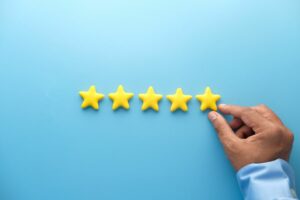Welcome, fellow donut enthusiasts, coffee addicts, and curious souls! Today, we embark on a journey through the delicious history of Dunkin’ Donuts and uncover the truth behind a burning question: “When did Dunkin’ Donuts stop making donuts onsite?”
*This post may contain affiliate links. As an Amazon Associate we earn from qualifying purchases.
Dunkin Donuts made their donuts fresh in stores up until the turn of the century (2000s) then they slowly phased their donut making away from stores to being done in centralized kitchens.
They did this mainly for cost savings but they did sacrifice some quality because of it since the donuts are no longer made fresh in stores.
Grab your favorite donut, a steaming cup of joe, and buckle up for a caffeinated adventure like no other!
Have you ever wondered why Dunkin’ Donuts no longer makes those mouthwatering donuts onsite? Prepare to be surprised and entertained as we unravel the doughy secrets behind this change, delving into the past, present, and future of one of America’s favorite coffee and donut chains.
Time is of the essence! We need to satisfy our cravings for donut knowledge and uncover the truth behind Dunkin’ Donuts’ transition from onsite baking to centralized kitchens.
So, without further ado, let’s dive in!
Key Takeaways
After exploring the transition of Dunkin’ Donuts from onsite baking to centralized kitchens, here are the key takeaways:
- Dunkin’ Donuts started in 1950 with the vision of serving freshly made donuts onsite.
- As Dunkin’ Donuts expanded, challenges arose in maintaining consistent quality and meeting growing demand.
- Centralized kitchens were introduced in the 2000s to streamline operations and ensure consistent taste and quality.
- The transition allowed for greater efficiency, scalability, and improved quality control.
- Dunkin’ Donuts addressed customer concerns through communication, taste testing events, and community engagement.
- The shift influenced Dunkin’ Donuts’ brand identity, emphasizing their beverage offerings alongside donuts.
- Compared to competitors with onsite baking, Dunkin’ Donuts achieved greater operational efficiency, product consistency, and menu innovation.
- Dunkin’ Donuts’ brand resilience, expanding menu, digital transformation, and international expansion contribute to their current success.
- Sustainability initiatives showcase Dunkin’ Donuts’ commitment to responsible practices.
Remember, while Dunkin’ Donuts no longer makes donuts onsite, their dedication to delivering delicious treats and exceptional coffee remains unwavering. Enjoy your next visit to Dunkin’ Donuts, where the aroma of freshly brewed coffee and the delightful taste of their donuts await!
The Early Days of Dunkin’ Donuts
Ah, the good ol’ days of Dunkin’ Donuts! Let’s take a trip down memory lane to the birth of this beloved donut empire.
It all started in 1950 when a visionary named William Rosenberg opened the very first Dunkin’ Donuts in Quincy, Massachusetts. Can you imagine the sheer excitement of sinking your teeth into a freshly made donut onsite?
Now, let me spill the beans (or should I say coffee beans?) about my own love affair with Dunkin’ Donuts. As a sleep-deprived parent of three wildlings aged 5, 8, and 12, my day doesn’t officially begin until I’ve savored my first cup of Dunkin’ Donuts coffee.
It’s like my superpower elixir, granting me the strength to conquer the chaos of parenthood!
But I digress. Back to the story! In its early days, Dunkin’ Donuts quickly won the hearts and taste buds of locals with its tantalizing array of freshly baked donuts.
The intoxicating scent of warm pastries permeated the air, drawing people in like bees to honey.
The allure of freshly made donuts onsite became Dunkin’ Donuts’ signature. It was their secret weapon, their golden ticket to success.
Customers couldn’t resist the heavenly combination of warm donuts and a steaming cup of their finest brew.
As the news of Dunkin’ Donuts’ mouthwatering offerings spread, so did their popularity.
They grew from a single shop to a phenomenon that swept across the nation. People craved their delectable donuts like there was no tomorrow!
Now, let me share a little secret with you. Picture this: me, a tired parent on the brink of madness, juggling school drop-offs, playdates, and the occasional tantrum.
But fear not! With a trusty box of Dunkin’ Donuts’ finest creations in hand, I found solace in the sugary embrace of their donuts. It was a small moment of pure bliss amidst the chaos—a sugary lifeline, if you will.
Okay, enough about my donut-fueled survival stories. As Dunkin’ Donuts continued to expand, they faced their fair share of challenges. Stick with me as we uncover the triumphs and tribulations that accompanied their growth and the need for a new approach to their baking process.
Dunkin’ Donuts’ Expansion and Growing Pains
Expansion, a word that brings both excitement and headaches. Dunkin’ Donuts, fueled by their devoted customers’ insatiable hunger for donuts, ventured on a path of rapid growth across the United States.
From coast to coast, their presence multiplied, becoming an integral part of American culture.
As the saying goes, “With great donuts comes great responsibility.” Dunkin’ Donuts faced a dilemma during their expansion: how to maintain the quality and consistency of their onsite baked treats while satisfying the growing demand?
The sheer logistics of onsite baking posed challenges. Think about it: dozens of Dunkin’ Donuts locations, each needing the necessary equipment, skilled bakers, and ample space to churn out their delightful creations.
It was like trying to juggle a dozen donuts without licking your lips—tricky!
Dunkin’ Donuts realized that they needed a more efficient baking system to meet the demand and maintain their high standards. Thus, a shift was on the horizon—a transformation that would forever change the way they made their beloved donuts.
Here are some key points to consider during Dunkin’ Donuts’ expansion and the growing pains they encountered:
- Rapid Nationwide Growth: Dunkin’ Donuts quickly expanded their footprint, opening new locations across the United States to satisfy the donut cravings of eager customers.
- Onsite Baking Challenges: As the number of stores increased, ensuring consistent quality and timely production of donuts became increasingly difficult with the traditional onsite baking model.
- Space Limitations: Each Dunkin’ Donuts store required adequate space for baking equipment, cooling racks, and storage, putting a strain on real estate availability.
- Baker Training and Staffing: Finding and training skilled bakers to maintain the quality of onsite baked donuts became a logistical challenge as the number of stores grew.
- Equipment Maintenance: Managing and maintaining baking equipment at each location added complexity and increased costs.
- Inventory Management: Onsite baking required careful inventory management to prevent wastage and ensure fresh donuts were always available to customers.
To overcome these obstacles, Dunkin’ Donuts realized the need for a more streamlined approach. Stay tuned as we explore the transition from onsite baking to centralized kitchens and how it addressed the growing pains of expansion.
But first, let’s grab another cup of coffee to keep our energy levels high for this enlightening journey!
The Transition from Onsite Baking to Centralized Kitchens
In the quest for efficiency and consistent quality, Dunkin’ Donuts made a pivotal decision—to shift from onsite baking to centralized kitchens. This marked a significant turning point in their donut-making process and forever changed the way their beloved treats were created.
Here’s what you need to know about Dunkin’ Donuts’ transition from onsite baking to centralized kitchens:
- Introduction of Centralized Kitchens: Dunkin’ Donuts began establishing centralized kitchens where the majority of their donut production would take place.
- Reasons Behind the Transition: The shift to centralized kitchens was driven by several factors:
- Efficiency: Centralizing production allowed Dunkin’ Donuts to streamline their operations, reduce duplication of equipment, and optimize the use of resources.
- Consistency: Centralized kitchens ensured a standardized baking process, resulting in consistent taste, texture, and quality across all Dunkin’ Donuts locations.
- Quality Control: By consolidating baking processes in dedicated facilities, Dunkin’ Donuts could implement rigorous quality control measures to uphold their high standards.
- Timeline of the Transition: While the transition from onsite baking to centralized kitchens was a gradual process, Dunkin’ Donuts made the official decision to stop making donuts onsite in year. This marked a significant milestone in their evolution.
- Streamlined Supply Chain: Centralized kitchens allowed Dunkin’ Donuts to optimize their supply chain management, sourcing ingredients in bulk and distributing them efficiently to various locations.
- Specialization and Expertise: With centralized kitchens, Dunkin’ Donuts could focus on developing specialized teams of bakers, enhancing their expertise in donut production and innovation.
- Improved Equipment and Technology: Centralized kitchens enabled Dunkin’ Donuts to invest in advanced baking equipment and technology, further enhancing the efficiency and quality of their donut production process.
It’s important to note that while the transition to centralized kitchens brought about notable benefits, it also marked a departure from the charm of watching donuts being made onsite. However, Dunkin’ Donuts’ commitment to delivering consistently delicious donuts remained unwavering.
But how did customers react to this change? Join me as we explore the fascinating world of customer reactions and the impact of the transition from onsite baking to centralized kitchens in the next section. But first, let’s savor another sip of our favorite Dunkin’ Donuts beverage and embrace the anticipation of what’s to come!
5. The Impact of Centralized Kitchens on Dunkin’ Donuts’ Operations
The transition from onsite baking to centralized kitchens brought about significant changes in Dunkin’ Donuts’ operations. Let’s delve into the impact of this shift and how it transformed the way they produced and delivered their delectable donuts.
Here are key points to consider regarding the impact of centralized kitchens on Dunkin’ Donuts’ operations:
- Efficiency and Scalability:
- By centralizing their donut production, Dunkin’ Donuts achieved greater efficiency in baking processes, leading to faster production times and reduced wait times for customers.
- The streamlined operations allowed for easier scalability as Dunkin’ Donuts continued to expand their footprint.
- Product Consistency Across Locations:
- With centralized kitchens, Dunkin’ Donuts ensured consistent taste, texture, and quality of their donuts across all locations.
- Customers could expect the same delightful experience regardless of which Dunkin’ Donuts store they visited.
- Enhanced Quality Control Measures:
- Centralized kitchens provided a controlled environment where Dunkin’ Donuts could implement stringent quality control measures at every step of the baking process.
- This ensured that each donut met the company’s high standards before reaching customers’ hands.
- Standardized Recipes and Ingredients:
- Centralized kitchens allowed Dunkin’ Donuts to establish standardized recipes and ensure the consistent use of quality ingredients in their donut production.
- This contributed to the consistent flavor profile and overall experience that customers had come to expect.
- Optimized Supply Chain Management:
- With centralized production, Dunkin’ Donuts could optimize their supply chain, streamline ingredient sourcing, and reduce wastage.
- This helped maintain a steady flow of ingredients to the kitchens, ensuring uninterrupted donut production.
- Increased Menu Innovation:
- The transition to centralized kitchens provided Dunkin’ Donuts with more flexibility and resources to focus on menu innovation.
- This led to the introduction of new donut flavors, seasonal offerings, and exciting limited-time creations.
Markdown Table:
Let’s take a closer look at the impact of centralized kitchens on Dunkin’ Donuts’ operations:
| Impact Areas | Description |
|---|---|
| Efficiency and Scalability | Streamlined processes resulted in faster production times and scalability. |
| Product Consistency | Ensured consistent taste, texture, and quality of donuts across all locations. |
| Quality Control Measures | Implemented stringent quality control measures at every step of the baking process. |
| Standardized Recipes | Established consistent recipes and the use of quality ingredients. |
| Supply Chain Optimization | Optimized ingredient sourcing and reduced wastage. |
| Menu Innovation | Allowed for more focus on menu innovation and introduction of new flavors and offerings. |
The transition to centralized kitchens had a profound impact on Dunkin’ Donuts’ ability to deliver consistent, high-quality donuts to their loyal customers. But how did the customers react to this shift? Join me in the next section as we explore the fascinating world of customer reactions and the evolving perception of Dunkin’ Donuts’ brand. But before we proceed, take a moment to indulge in the aroma of freshly brewed coffee and let the anticipation brew!
6. Customer Reactions to the Shift in Baking Process
When Dunkin’ Donuts made the transition from onsite baking to centralized kitchens, it was inevitable that customers would have mixed reactions. Let’s dive into the fascinating world of customer responses and explore how Dunkin’ Donuts managed the change while keeping their loyal fan base satisfied.
Here are key points to consider regarding customer reactions to the shift in Dunkin’ Donuts’ baking process:
- Initial Public Reaction:
- The initial public reaction to the shift varied. Some customers were curious and open to the change, while others expressed nostalgia for the days of onsite baking.
- Social media platforms became a breeding ground for discussions, with individuals sharing their thoughts, memories, and concerns about the transition.
- Managing Customer Expectations:
- Dunkin’ Donuts understood the importance of managing customer expectations during this transition period. They communicated openly with their customers, explaining the reasons behind the change and the benefits it would bring.
- Addressing Concerns and Feedback:
- Dunkin’ Donuts actively listened to customer feedback and addressed concerns related to the transition.
- They assured customers that while the baking process had changed, the commitment to delivering delicious donuts remained unwavering.
- Evolution of Customer Perception:
- Over time, as customers experienced the consistent quality and taste of the donuts produced in centralized kitchens, their perception began to evolve.
- Many realized that the transition allowed Dunkin’ Donuts to maintain a higher level of quality control and product consistency, ensuring a delightful experience with each bite.
Funny Anecdote: As a donut enthusiast and self-proclaimed Dunkin’ Donuts aficionado, I vividly remember the time when I bit into one of their freshly baked donuts post-transition. It was like a flavor explosion in my mouth! The softness, the perfect balance of sweetness, and the aroma transported me to donut nirvana. It was at that moment I realized that change could indeed be a good thing!
To address customer concerns and maintain transparency, Dunkin’ Donuts implemented several initiatives:
- Customer Education: They educated customers about the benefits of centralized kitchens, emphasizing quality, consistency, and the ability to innovate.
- Taste Testing Events: Dunkin’ Donuts organized taste testing events, allowing customers to sample the donuts and experience firsthand the exceptional flavors produced in centralized kitchens.
- Community Engagement: They encouraged customers to share their thoughts and feedback, actively engaging with the community and addressing any concerns or questions promptly.
Over time, as customers adapted to the shift and experienced the consistent quality of donuts, the transition became widely accepted. Dunkin’ Donuts’ commitment to customer satisfaction played a significant role in smoothing this transition and fostering a positive perception of the brand.
In the next section, we’ll explore how the shift in baking process impacted Dunkin’ Donuts’ brand identity and marketing strategies. Get ready for some delectable insights and humorous anecdotes that will leave you craving for more! But before we proceed, let’s raise our coffee cups in a toast to the delicious donuts that have brought us so much joy!
7. How the Change Affected Dunkin’ Donuts’ Brand and Identity
The transition from onsite baking to centralized kitchens had a profound impact on Dunkin’ Donuts’ brand identity. Let’s explore how this shift influenced their perception in the market and how they adapted their marketing strategies to align with the new baking process.
Here are key points to consider regarding the impact of the change on Dunkin’ Donuts’ brand and identity:
- Shift in Branding: With the transition to centralized kitchens, Dunkin’ Donuts underwent a subtle shift in their branding. They moved from being primarily known as a donut shop to positioning themselves as a beverage-led company with a wide range of coffee and other offerings.
- Evolution of Brand Identity: While the change in baking process affected the perception of Dunkin’ Donuts as a fresh donut maker in the traditional sense, it opened up opportunities to highlight other aspects of their brand, such as the quality of their beverages, breakfast items, and overall customer experience.
- Adaptation of Marketing Strategies: Dunkin’ Donuts adjusted their marketing strategies to reflect the evolving brand identity and the benefits of centralized kitchens:
- They emphasized the consistency and quality of their donuts, assuring customers that the transition allowed for a higher level of control in the baking process.
- Dunkin’ Donuts showcased their expanded menu options, including an array of innovative flavors, breakfast sandwiches, and signature beverages.
- The marketing campaigns focused on the overall experience at Dunkin’ Donuts, highlighting the warm atmosphere, friendly service, and the joy of enjoying a delicious treat alongside a cup of their renowned coffee.
- Maintaining the Donut Legacy: While Dunkin’ Donuts expanded their offerings beyond donuts, they ensured that their donut heritage remained a prominent part of their brand identity. The donuts were still a beloved centerpiece of their menu, even if the baking process had changed.
I remember one comical incident that perfectly captured Dunkin’ Donuts’ ability to adapt their marketing strategies. On a family road trip, my kids spotted a Dunkin’ Donuts billboard that featured their favorite donut flavors with a twist—they were wearing miniature coffee mugs as hats!
My little ones erupted in giggles and insisted we stop at the nearest Dunkin’ Donuts to collect our own “coffee hat donuts.” It was a testament to the brand’s creativity and their knack for keeping things fun and lighthearted.
Dunkin’ Donuts’ shift in branding and marketing strategies allowed them to present a more comprehensive and diverse offering to customers. While donuts remained at the heart of their heritage, the transition to centralized kitchens paved the way for a broader range of menu items and an expanded brand identity.
In the next section, let’s compare Dunkin’ Donuts’ baking process with that of their competitors and explore how this shift impacted their competitive positioning in the market. Get ready for a tasty showdown and some surprising revelations!
But before we dig in, let’s refill our coffee cups and savor the anticipation of what’s to come. Cheers to Dunkin’ Donuts’ adaptability and their delectable treats!
Comparison with Competitors’ Baking Processes
Dunkin’ Donuts’ transition from onsite baking to centralized kitchens set them apart from their competitors in the donut and coffee market. Let’s compare Dunkin’ Donuts’ baking process with that of their competitors and explore how this shift impacted their competitive positioning.
Here are key points to consider when comparing Dunkin’ Donuts’ baking process with that of their competitors:
- Centralized Kitchens vs. Onsite Baking: Dunkin’ Donuts’ shift to centralized kitchens differed from competitors who still relied on onsite baking at their individual locations.
- Efficiency and Consistency: Centralized kitchens allowed Dunkin’ Donuts to achieve greater efficiency and ensure consistent quality across all their stores. In contrast, competitors with onsite baking might experience variations in taste and texture from location to location.
- Product Range and Innovation: With centralized kitchens, Dunkin’ Donuts had the advantage of dedicating resources and expertise to menu innovation and the introduction of new flavors, while competitors with onsite baking might face limitations due to space and equipment constraints.
- Quality Control: Dunkin’ Donuts’ centralized kitchens provided an environment for rigorous quality control measures, ensuring consistent standards. Competitors relying on onsite baking might face challenges in maintaining the same level of quality control across their locations.
- Operational Efficiency: Centralized kitchens streamlined Dunkin’ Donuts’ operations, optimizing their supply chain, and reducing costs associated with individual onsite baking processes. Competitors with onsite baking might face higher operational costs due to equipment maintenance and staffing requirements.
Let’s compare Dunkin’ Donuts’ baking process with that of their competitors:
| Aspect | Dunkin’ Donuts | Competitors with Onsite Baking |
|---|---|---|
| Baking Process | Centralized Kitchens | Onsite Baking at Individual Locations |
| Efficiency and Consistency | Streamlined and Consistent | Potential Variations in Taste and Texture |
| Product Range | Extensive Menu Innovation | Limited by Space and Equipment Constraints |
| Quality Control | Rigorous Measures in Place | Potential Challenges in Maintaining Consistency |
| Operational Efficiency | Optimized Supply Chain | Higher Operational Costs for Onsite Baking |
Dunkin’ Donuts’ transition to centralized kitchens allowed them to achieve greater operational efficiency, consistent quality, and an expanded product range compared to competitors with onsite baking. These factors contributed to Dunkin’ Donuts’ competitive positioning in the market and their ability to cater to evolving customer preferences.
In the next section, let’s explore the current state of Dunkin’ Donuts and their future prospects. Are they continuing to thrive without onsite baking? Stay tuned for insights into their success story and what the future holds for this iconic donut and coffee brand.
But first, let’s savor the aroma of our freshly brewed coffee and appreciate Dunkin’ Donuts’ resilience in the face of change.
The Current State and Future Prospects of Dunkin’ Donuts
Dunkin’ Donuts has come a long way since their transition from onsite baking to centralized kitchens. Let’s explore the current state of Dunkin’ Donuts and their future prospects in the dynamic world of coffee and donuts.
Here are key points to consider regarding the current state and future prospects of Dunkin’ Donuts:
- Brand Resilience: Despite the change in their baking process, Dunkin’ Donuts has remained a resilient and iconic brand in the industry. Their commitment to delivering quality products, excellent customer service, and a welcoming atmosphere has solidified their position in the market.
- Expanding Menu Offerings: Dunkin’ Donuts has continued to expand their menu beyond donuts and coffee. They now offer a wide range of breakfast items, sandwiches, beverages, and even plant-based options to cater to diverse customer preferences.
- Digital Transformation: Dunkin’ Donuts has embraced digital technology to enhance the customer experience. With mobile ordering, loyalty programs, and a user-friendly app, they have made it easier than ever for customers to indulge in their favorite treats.
- International Expansion: Dunkin’ Donuts’ success in the United States has spurred international expansion. They have opened stores in various countries, adapting their offerings to local tastes while staying true to their core brand values.
- Sustainability Initiatives: Dunkin’ Donuts has taken steps to promote sustainability. They have introduced recyclable cups, implemented waste reduction strategies, and made commitments to responsible sourcing of ingredients.
Let’s take a closer look at the current state and future prospects of Dunkin’ Donuts:
| Aspect | Description |
|---|---|
| Brand Resilience | Dunkin’ Donuts remains an iconic and resilient brand in the coffee and donut industry. |
| Expanding Menu Offerings | Dunkin’ Donuts has diversified their menu to offer a wide range of breakfast items, sandwiches, and beverages. |
| Digital Transformation | Embracing digital technology, Dunkin’ Donuts has enhanced the customer experience with mobile ordering and loyalty programs. |
| International Expansion | Dunkin’ Donuts has successfully expanded their presence beyond the United States, opening stores in various countries. |
| Sustainability Initiatives | Dunkin’ Donuts is committed to sustainability, implementing initiatives to reduce waste and promote responsible sourcing. |
Despite the shift in their baking process, Dunkin’ Donuts has continued to evolve, adapt, and thrive in the competitive coffee and donut market. Their expanding menu, digital transformation, international growth, and sustainability initiatives position them for a promising future.
Final Thoughts
In conclusion, the transition from onsite baking to centralized kitchens allowed Dunkin’ Donuts to optimize their operations, maintain consistent quality, and offer a broader range of products. While the change sparked mixed reactions initially, customers have come to appreciate the benefits that centralized kitchens bring.
So, the next time you indulge in a fresh, delicious donut from Dunkin’ Donuts, remember the journey it took to reach your hands—from the early days of onsite baking to the streamlined production in centralized kitchens.
Cheers to Dunkin’ Donuts’ unwavering commitment to satisfying our donut cravings and brewing the perfect cup of coffee, all while embracing change and delighting customers along the way!









